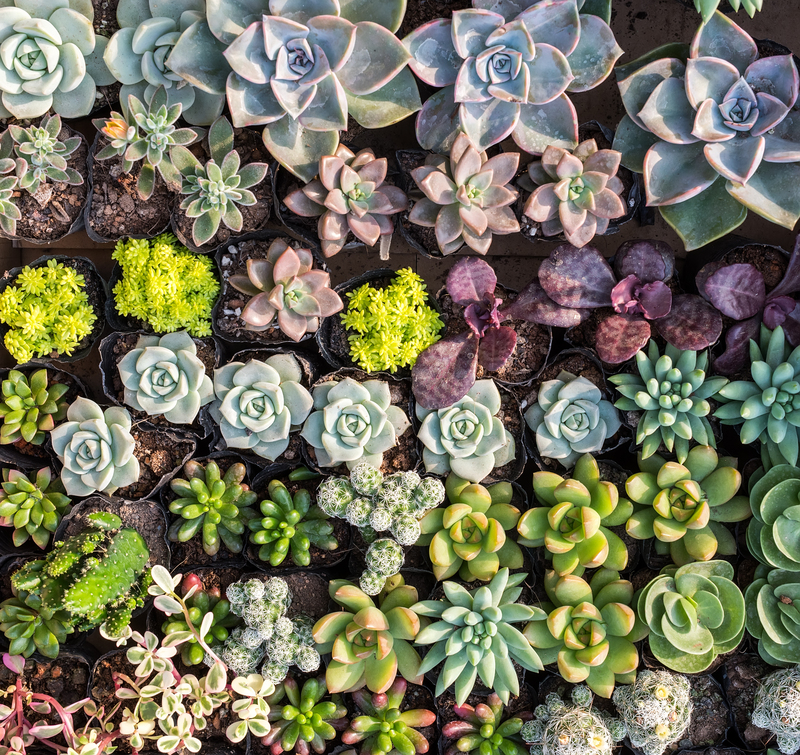Enhance Your Home with Vertical Gardening
Posted on 13/06/2025
Enhance Your Home with Vertical Gardening: A Comprehensive Guide
Are you looking for an inventive way to bring lush greenery and fresh air to your house, even if you are short on floor space? Vertical gardening is a modern approach for urban dwellers, garden enthusiasts, and anyone aiming to transform a home with style and sustainability. This approach not only beautifies your living space but also promotes a healthier environment and cleverly utilizes unused areas. In this in-depth article, you will uncover everything you need to know to enhance your home with vertical gardening, from its benefits to actionable design and plant selection tips.

What is Vertical Gardening?
Vertical gardening refers to growing plants upward instead of outward, using vertical surfaces like walls, trellises, or shelves. Whether indoors or outdoors, this form of gardening allows you to maximize your growing area, making it an excellent solution for small spaces or urban homes.
Why Choose Vertical Gardening?
- Space Efficiency: Perfect for limited or unconventional spaces where traditional gardens won't fit.
- Aesthetic Appeal: Provides a striking visual effect and acts as living art in your home.
- Improved Air Quality: Indoor plants help filter out toxins and increase oxygen levels, benefitting your health.
- Thermal Insulation: Vertical gardens can regulate indoor temperatures and cut down on energy bills.
- Biodiversity: Attracts pollinators and supports a more diverse ecosystem, even in the city.
- Privacy: Living green walls can serve as attractive privacy screens indoors and outdoors.
Types of Vertical Gardens
There are several variations of vertical gardens. Choosing the right style depends on your space, budget, and the plants you want to grow. Here are popular options to enhance your home:
1. Living Walls (Green Walls)
- Composed of panels, felts, or modular containers mounted on walls.
- Ideal for large-scale installations indoors or outdoors.
- Can feature a mix of ornamental and functional plants.
2. Trellis and Climbing Gardens
- Perfect for vining plants like pothos, ivies, or jasmine.
- Easy DIY with wires, wooden frames, or mesh screens.
3. Stackable and Tiered Planters
- Utilize stackable pots or shelves to create multi-layered gardens.
- Great for balconies or patios with limited ground space.
4. Hanging or Pocket Gardens
- Use fabric or canvas organizers with pockets or hanging containers for herbs and small plants.
- Versatile and easily shiftable to different locations.
Choosing the Best Plants for Vertical Gardening
Your choice of plants is essential for a thriving and visually stunning vertical garden. Consider the available sunlight, humidity, and your maintenance commitment. Here are some ideal plant options:
Best Indoor Plants
- Spider plant
- Pothos
- Philodendron
- Ferns
- Succulents
- Air plants (Tillandsia)
Best Outdoor Vertical Garden Plants
- Strawberries
- Lettuce and leafy greens
- Tomatoes (dwarf varieties)
- Cucumbers and beans (for trellises)
- Herbs like basil, thyme, oregano, and mint
- Flowering vines such as clematis, bougainvillea, or morning glory
How to Plan Your Home Vertical Garden
To enhance your home with vertical gardening, careful planning is key. Follow these step-by-step guidelines:
Step 1: Choose Your Location
- Look for walls or corners with ample light, good air circulation, and where plants will not obstruct movement.
- For indoor gardens, choose spaces near windows or consider supplemental grow lights.
- Outdoor vertical gardens do best on patios, balconies, or unused external walls.
Step 2: Decide on Design and Structure
- Assess your space -- will a simple trellis suffice, or do you want a dramatic full-wall installation?
- For DIY vertical gardening, repurposed pallets, rain gutters, or shoe organizers are popular, cost-effective ideas.
Step 3: Select Appropriate Plants
- Consider light requirements and pick varieties that will thrive in your chosen location.
- Mix and match textures, heights, and colors for a visually captivating effect.
Step 4: Prepare Containers and Soil
- Use quality potting mix and well-drained containers for successful growth.
- For living walls, ensure the frames or panels have irrigation channels or self-watering systems.
Step 5: Install Your Vertical Garden
- Follow manufacturer or DIY instructions for securing panels or planters to the wall.
- Arrange plants starting from bottom to top, ensuring proper support for climbers.
Step 6: Maintain and Enjoy!
- Regularly water, feed, prune, and check for pests.
- Enjoy a thriving, ever-changing living masterpiece in your home!
DIY Vertical Gardening Ideas for Every Home
If you're feeling creative, vertical gardening at home can be as simple or intricate as you like. Here are several inspiring and practical ideas:
Pallet Garden
- Repurpose a wooden pallet, attach landscape fabric to one side to hold soil, fill with potting mixture, and plant your chosen greenery between the slats.
- Great for herbs on a balcony or kitchen wall.
Shoe Organizer Garden
- Use a canvas shoe organizer with pockets, hang on a door or wall, and fill each pocket with soil and plants.
- Perfect for small herbs and succulents.
Rain Gutter Gardens
- Mount sections of rain gutters horizontally to a fence or wall, fill with soil, and plant small vegetables or flowers.
- Ideal for leafy greens and strawberries.
Hanging Bottle Garden
- Upcycle plastic bottles by cutting out a window, filling with soil, and stringing multiples vertically to create a unique, eco-friendly display.
Benefits of Vertical Gardening for the Home
Adopting vertical gardening isn't just about aesthetics. It profoundly impacts your living environment and well-being. Here are some of its remarkable advantages:
- Air Purification: Indoor vertical gardens help cleanse the air of pollutants, making your home healthier.
- No Soil Erosion: For outdoors, vertical gardens minimize soil erosion and surface runoff from rainfall.
- Higher Yields: Certain crops, such as beans, tomatoes, and cucumbers, grow better when trained vertically, resulting in greater harvests in less space.
- Better Accessibility: Plants positioned vertically make watering, pruning, and harvesting easier--ideal for seniors or those with mobility issues.
- Sound Insulation: Thick living walls reduce noise pollution, acting as a sound barrier in urban areas.
- Psychological Well-being: Studies show that living near plants and greenery reduces stress and enhances mood and concentration.
Common Challenges and Solutions in Vertical Gardening
While vertical gardening has many benefits, it can pose some unique challenges. Here's how to address the most common issues:
- Watering: Vertical gardens tend to dry out faster, especially on upper levels. Solution: Install a drip irrigation system or self-watering planters and group plants with similar watering needs.
- Sunlight Distribution: Plants on lower tiers may receive less light. Solution: Rotate plants regularly or supplement with LED grow lights for indoor walls.
- Weight: Wet soil, heavy containers, and mature plants can strain your wall. Solution: Ensure that the supporting structure is firmly anchored and use lightweight materials where possible.
- Pest and Disease Control: Crowded spaces can harbor pests. Solution: Check plants frequently, provide adequate air circulation, and use organic pest control methods when possible.
- Maintenance: Some vertical gardens require regular pruning and care. Solution: Choose low-maintenance plants if you prefer less upkeep.
Enhance Home Value with Vertical Gardening
Prospective homebuyers and guests are invariably drawn to green, innovative spaces. Installing a vertical garden at home can boost your property's appeal, add value, and differentiate your space in the market. Whether you aim for a small herb wall in your kitchen or a grand green facade outside, this sustainable trend is not just a fleeting style--it's an investment in wellness and longevity.

Vertical Gardening Tips for Beginners
- Start Small: Begin with a few planters or a pocket garden before scaling up.
- Choose Easy-Care Plants: Succulents, philodendrons, and herbs are perfect for starters.
- Monitor Light and Water: Keep an eye on how sun and shade shift in your chosen location.
- Experiment and Have Fun: Mix plant types, pot designs, and layouts until you find what works best for your home and style.
Conclusion: Transform Your Living Space with Vertical Gardening
Enhance your home with vertical gardening--it's more than just a space-saving hack; it's a movement toward sustainable, healthy, and beautiful living. With creativity, planning, and a bit of nurturing, you can enjoy year-round greenery, fresher air, and an oasis to proudly display. Whether you're decorating a small urban apartment or a spacious suburban home, vertical gardening offers endless possibilities for every lifestyle.
Ready to begin? Choose a sunny spot, pick your favorite plants, and let your walls come alive! For more tips and inspiration on vertical gardens, keep exploring and sharing your experiences with fellow plant lovers.



